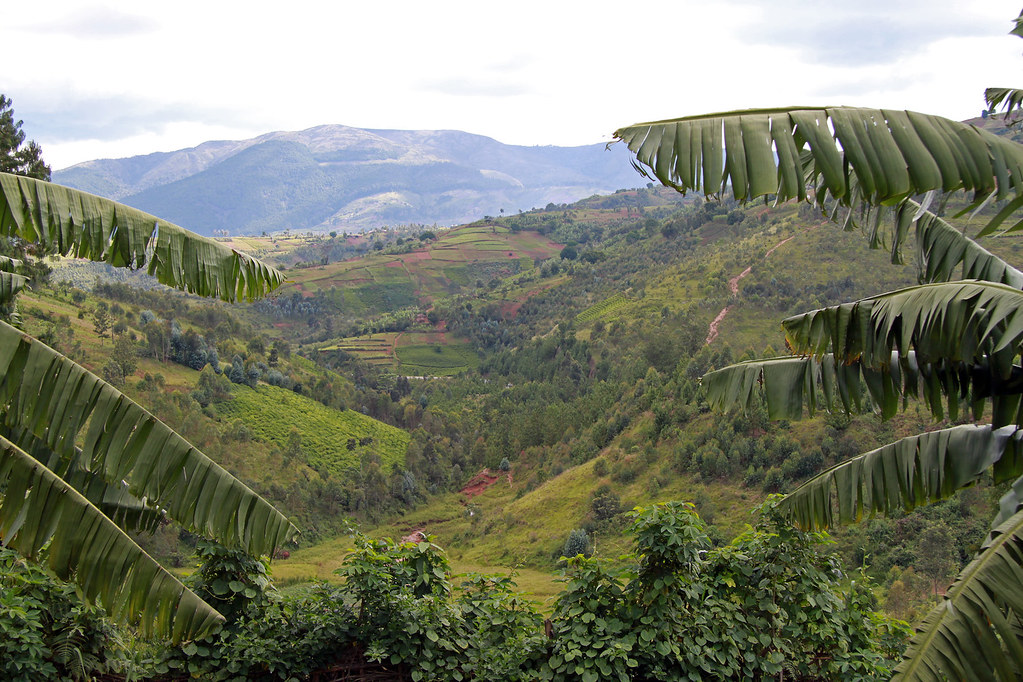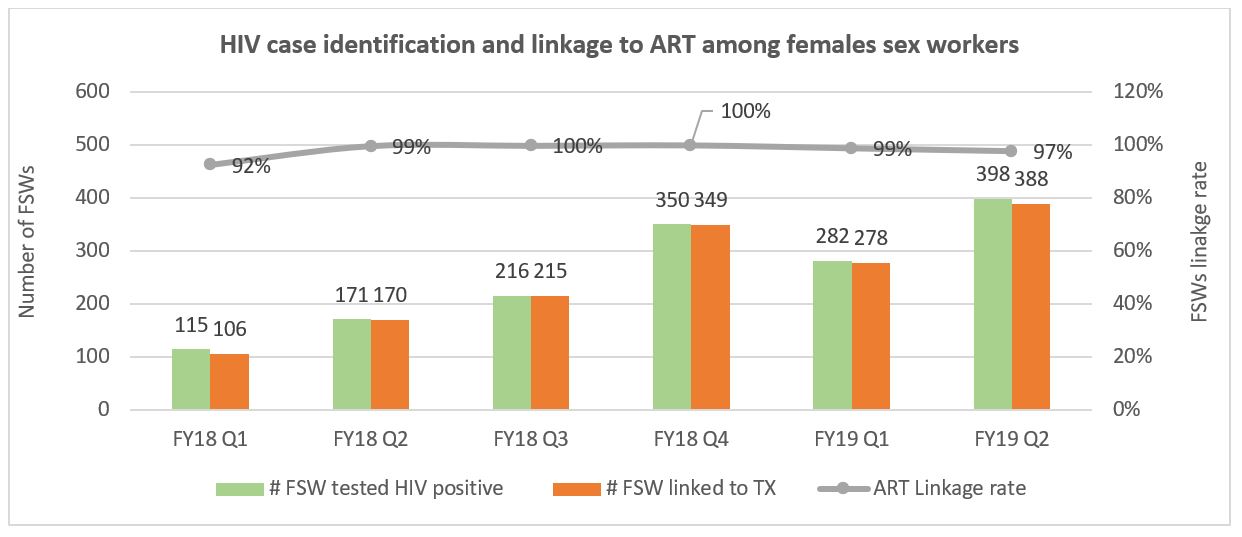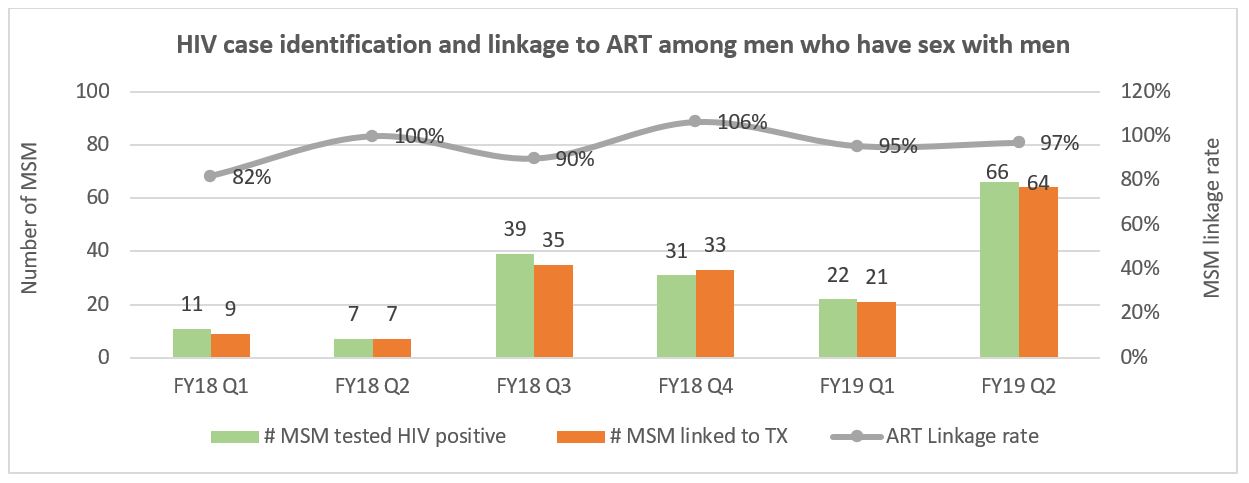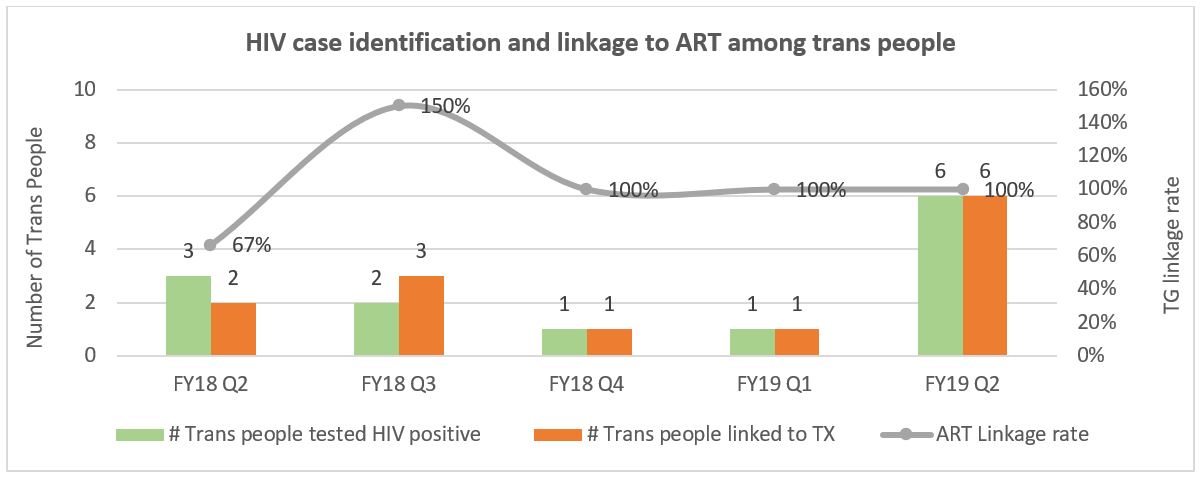Written by Aubrey Weber, Technical Officer, FHI 360; Tiffany Lillie, Senior Technical Advisor, LINKAGES; Dorica Boyee, Technical Advisor, LINKAGES; & Dismas Gashobotse, Project Manager, LINKAGES Burundi

Photo: Christine Vaufrey
The USAID– and PEPFAR-supported LINKAGES project first started working in Burundi in August 2016 to reduce HIV transmission among key populations — sex workers, men who have sex with men (MSM), and transgender people – and to improve their enrollment and retention in care and treatment. Project activities have been implemented in the provinces of Bujumbura Mairie, Bujumbura, Kirundo, Ngozi, Kayanza, and Gitega. Within the past three years, LINKAGES Burundi has consistently experienced high rates of linking newly diagnosed HIV-positive female sex workers (FSWs), MSM, and transgender people to care and treatment. Between the first quarter of FY18 and the second quarter of FY19, the average rates for linkage to antiretroviral treatment were 98 percent among FSWs, 96 percent among MSM, and 100 percent among transgender people.



LINKAGES Burundi credits five “secrets” to their success:
Link HIV-positive individuals to care and treatment immediately after diagnosis
Burundi’s national guidelines on using antiretrovirals for HIV prevention and treatment recommend the “test and treat strategy.” Following these guidelines, LINKAGES has made strides in initiating key population individuals who test HIV-positive on antiretroviral treatment on the same day of their test, or at the soonest possible time within the first week of diagnosis for those who test positive through mobile testing in the community. Same-day initiation has reduced the burden of transportation fees for clients traveling to facilities because they are getting treatment the same day they get tested and receive their testing results.
Establish and maintain strong networks
Peer educators, peer navigators, counselors, and clinicians must work closely together to ensure that their clients who test and are diagnosed HIV-positive are initiated onto treatment. If these networks are not strong, important opportunities for linking individuals to treatment can be missed. For mobile teams, counselors and nurses travel to the community together to conduct HIV testing. The facility staff are able to meet KP individuals during the outreach and testing session before they are diagnosed HIV positive. Then, if someone tests HIV positive, the nurse can help them schedule a time to visit the facility to begin treatment. It is the relationship building between HIV program staff and KP community members that is key to establishing trust, which increases the likelihood that they will come for their first appointment at the treatment site.
Peer navigators in particular strengthen networks between treatment facilities and support readiness teams for treatment initiation. Peer navigators are HIV-positive individuals who go with their peers to clinic sites (or encourage them to attend), help peers adhere to treatment, and provide counseling. Often, peer navigators also participate in mobile testing; when key population members are diagnosed positive, they are simultaneously informed of the benefits of being connected with a peer navigator and are introduced to one on the spot. If an individual opts in to receiving such support, the peer navigator will be with the client every step of the way from clinic visits to treatment initiation and adherence.
Participate in performance-based financing for the clinics
The World Bank funds a government-led program to award clinics that meet certain criteria, including the number of people they have tested and diagnosed positive who are initiated on antiretroviral therapy. This program was first initiated in 2010 and has since been revised and improved to include more indicators over time. They have recently been considering adding antiretroviral therapy retention criteria to the performance criteria. On a monthly basis, the performance of health facilities is evaluated using several key indicators. Each indicator received a grade and facilities are granted funds depending on their overall score. This program incentivizes health care workers and their leadership teams to link more people living with HIV to treatment because part of the award is used to improve working conditions and facility equipment.
Collaborate with programs and partners that have complementary missions
LINKAGES Burundi and Reaching an AIDS Free Generation (RAFG) are both implemented by FHI 360 to strengthen HIV prevention and treatment services. While LINKAGES focuses on key populations and RAGF focuses on the general population, the two projects work together under the umbrella of their shared mission. LINKAGES and RAGF both focus on treatment initiation and retention, with RAFG mainly supporting the facilities and LINKAGES mainly supporting peer navigation within the community. Consistent collaboration with RAFG has allowed LINKAGES Burundi to easily identify individuals who are not yet on treatment and those lost to follow-up. Then, LINKAGES works with peer navigators to bring those individuals back to care.
Task shift and decentralize
Health care workers, including nurses, are trained on dispensing antiretrovirals. This allows those working in clinics and health centers across the country to write prescriptions for care and treatment. By shifting this task that was originally exclusive to physicians, more health care workers can reach key population individuals with the services they need in a timely manner. Given that Burundi is a small country, task-shifting and decentralizing services have led to increased efficiency of service delivery and enhanced accessibility to care.
